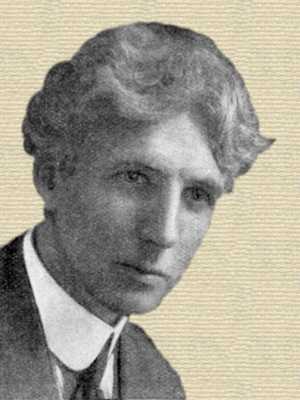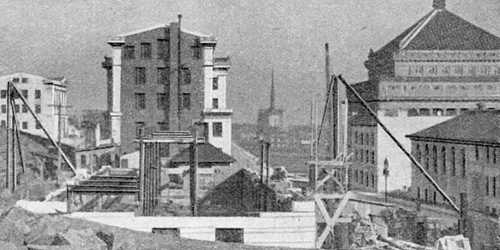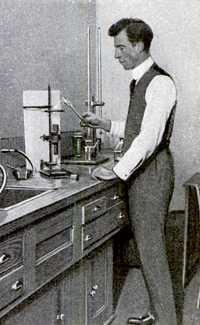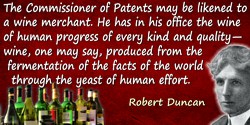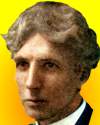 (source)
(source)
|
Robert Kennedy Duncan
(1 Nov 1868 - 18 Feb 1914)
Canadian industrial chemist, teacher and populariser of science who was a preeminent writer interpreting science and advocated partnering scientific research and industry to create new and better consumer products. As director of the Mellon Institute of Industrial Research he brought the learning of the university to the service of industry.
|
HARNESSING SCIENCE TO THE FACTORY
By FRANK PARKER STOCKBRIDGE
from Popular Mechanics Magazine (1914)
[p.474] [EDITOR'S NOTE—The sudden death of Dr. Robert Kennedy Duncan, which occurred on Feb. 18, 1914, is a distinct and serious loss to the cause of science which he so faithfully served. It is even a greater loss to American industry, to which he was in a very true sense a torchbearer, shedding the light of the new knowledge on its old problems and leading the way toward that industrial efficiency which alone can place American manufacturers on an equal footing with their foreign competitors in the world markets. Doctor Duncan was born in Canada, Nov. 1, 1868, and was educated at the University of Toronto, and at Clark and Columbia Universities in this country. He was the discoverer of several valuable industrial chemical processes and the author of a number of books on scientific subjects. His greatest achievement, however, was his successful attempt to bring manufacturing industries and pure science into closer accord, an achievement which was just reaching its full fruition when he died. It is gratifying to know that the work he so ably began will be continued under the direction of one in whom he had complete confidence and who had long been in touch with his methods and his plans, Dr. Raymond Foss Bacon. “A great deal of the credit for what we have accomplished belongs to Doctor Bacon,” said Doctor Duncan in the course of the interview, less than a month before his death, which formed the basis of this article. “I want you to be sure to mention him.” The request was characteristic of Doctor Duncan's broad mind and generous nature. And upon the foundation which he laid with so much skill and pains, the new conception of the place of science in industry will stand as his enduring monument.]
The Late ROBERT KENNEDY DUNCAN, Sc. D. — Dr. Duncan, the Originator of the Modern Idea of Industrial Research in the University, died on Feb. 18, 1914, after this article had been written and set in type
IN a little wooden building on the grounds of the University of Pittsburgh, 36 young chemists are working at scientific problems, the solution of which will earn millions of dollars for many industries, and eventually add to the happiness and prosperity of everybody in the world.
The little wooden building is the temporary headquarters of the Mellon Institute of Industrial Research of the University of Pittsburgh. A hundred feet away, the walls are going up for a big fireproof building that will house 70 distinct research laboratories, in which a hundred men can work at once on as many different industrial problems.
But the walls of the little old wooden building, if they could speak, could tell of discoveries already made, as startling, as valuable and as far-reaching in importance as any that are likely to be made in the institute’s new quarters.
Think what it would mean to reduce the nation’s bread bill 1 per cent. “Homemade” bread is extinct in this country except in remote rural districts, while the old-fashioned “salt-rising” bread of our grandmothers, which everyone who ever was fortunate enough to taste it will agree was the best bread ever baked, is practically unknown to the present generation of Americans. We buy our bread from the bakeries—almost $400,000,000 worth of it every year.
“How can we make better bread?” asked a big baking company of the late Prof. Robert Kennedy Duncan, Director of the Mellon Institute. The first step in finding the answer was to put a trained chemist at work in one of the institute’s laboratories. The baking company paid him a salary of $750 a year for two years and offered him a prize of $2,000 if he found a satisfactory answer. Before he had finished his experiments, another baking company asked the same question. They offered $4,750 a year for two years and a prize of $10,000 for any practical results.
And the chemists got results—found not only one answer but a dozen answers—found how to make better bread, while at the same time cutting down the cost of manufacture; found how to make “salt-rising” bread of better quality than the kind grandma used to make; found out, in short, so many interesting and valuable facts about the chemistry of bread making, that the companies which are now [p.475] utilizing these facts are already saving probably more than $250,000 a year in the cost of their product and giving their customers better bread than they have ever had. And that was only a beginning of the research into the chemistry of bread at the Mellon Institute. When I visited it in January I saw three chemists working with masses of dough in one of the little laboratories, trying to work out still more complicated problems in bread making. They are working under a gift of $6,000 a year for their living expenses, with another $10,000 prize in view, if they get the answer.
It is almost safe to predict that the poorest bread sold ten years from now will be better than the best on the market today, and cheaper. It is certain that the world’s knowledge of chemistry of bread making has been enormously increased within five years as a result of these men’s work.
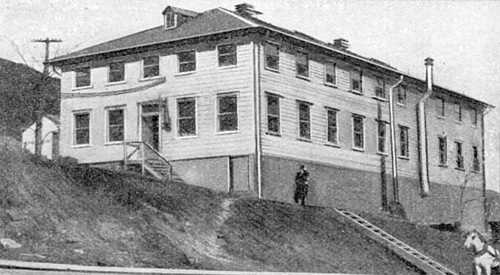
I have written first of the Mellon Institute’s work in bread, because there is no other product of industrial chemistry that enters into the lives of so many people. Baking, after all, is merely a chemical process. But so are thousands of other industrial processes —almost all manufacturing, every branch of farming. Chemistry enters in some degree into every branch of business, into the day’s work of everyone engaged in productive labor.
Over in Germany, manufacturers and business men have recognized this direct connection between science and industry for many years, and have been making good use of it. The greatest triumphs of German industry, triumphs that have given them almost a monopoly of the world’s markets in [p.476] many lines, have been won through the cooperation of business and science and the application on a commercial scale of the chemists’ laboratory discoveries. But while the Germans have been going ahead rapidly, American industries have lagged behind, either refusing to avail themselves of chemical knowledge that would be of immense value to them or at least offering no encouragement to original chemical research, even in lines directly related to their own products. Occasionally an American manufacturer has hired a chemist on about the same basis as he would hire a machine hand, and with about the same expectation of a daily output in return for his wages. But the instances have been as few in America as they have been frequent in Germany where manufacturers have provided adequate laboratory equipment, freedom from restrictions and interference, and reasonable salaries for trained chemists to work out scientifically the vital unsolved problems of a particular industry.
Dr. Robert Kennedy Duncan, at that time professor of industrial chemistry in the University of Kansas, suggested in 1907, in a book on chemical problems, that a practical means of giving American industry the benefit of the best scientific research might be found in the establishment of what he termed “Industrial Fellowships,” in some university. He proposed that the manufacturer should lay his particular problem before the university authorities, paying an annual sum sufficient to provide a fair salary for a skilled research worker for a limited time, and offering a prize, either in the form of a cash bonus or an interest in the profits derived from the discovery, if the problem were solved. Several manufacturers took up the idea, and a number of industrial fellowships were established at the University of Kansas. The idea spread, the University of Pittsburgh invited Doctor Duncan to take charge of similar work at that institution, and the Mellon Institute is the result. Doctor Duncan was its first director, with Raymond Foss Bacon, Ph. D., as associate director.
An interesting and inspiring place, this rough building in which science is teaching industry how to transmute base materials into coined gold. Literally from cellar to garret it is crowded with men and women and apparatus, while the odors of ozone, oxides of nitrogen, yeast, petroleum, sulphuric acid and a hundred other gases and chemicals mingle familiarly in the hallways and provide an “atmosphere” that at once suggests chemistry, even though it does not necessarily imply research. Thirty-two industrial fellowships have so far been established at the Mellon Institute. The work under many of them has been completed, but that still going on represents an annual expenditure by the industrial interests that have endowed the fellowships of $102,400.
“We can get money for research easier than we can get men qualified to do the highest class of research work,” said Doctor Duncan, when I talked with him less than a month before his death. “Two Pittsburgh men, A. W. and R. B. Mellon, have given $250,000 for the new building, $60,000 for apparatus, $20,000) for the purchase of a chemical library, and an endowment of $40,000 a year for general maintenance. This makes it possible to devote every cent that is paid by a manufacturer for research work to the solution of his particular problem. Our only difficulty now is in getting the best men for research work, but we are getting them from every part of the world.”
Secrecy is the rule at the Mellon Institute—the protection of the trade secrets of the manufacturers in whose interests the research work is being done, in order that they may reap the benefits of their investments in the fellowships. Yet every contract between an industrial company and the institute contains a provision insuring the eventual publication, after a reasonable lapse of time, of the results obtained, for the benefit of the whole industrial world. When a process or [p.477] product discovered in the laboratory is patentable, it is patented by the research worker discovering it, if the donor of the fellowship so desires, and the patent transferred to the donor. Often, however, the new processes found are kept secret rather than giving to the public, through the medium of a patent, a clue from which others might work out similar results without infringement, as so often happens in commercial enterprises. But since the primary function of the university is to serve the whole people rather than any individual or single interest, even these secrets must in time be disclosed, though not at such time or under such conditions as to affect seriously the business of their original possessors.
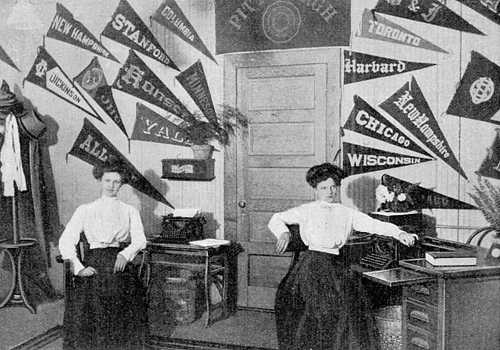
With forty or fifty young chemists working in the same building, each on a different problem and each bound to secrecy as to the exact results he obtains and the methods by which he gets them, it is, of course, essential that a high standard of honor shall prevail throughout the establishment. One of the finest and most inspiring sights at the Mellon Institute is the partition wall in the main office, covered with university pennants. Upon this wall, when he enters the institute to take up research work, each fellow tacks the emblem of his alma mater. It has already become a tradition that in so doing he pledges the honor of his university, not only as to the quality of his work, his enthusiasm and his devotion to it, but by way of an oath to keep his own counsel and never reveal the secrets with which he is intrusted or that he may learn while there. Not once has there been the slightest lapse from this high standard of honor. It is understood that none of the researchers is to question another as to the results he is getting or how he got them. He may—and this is being done continually—ask another who has specialized in a particular [p.478] field of chemistry how best to get a certain reaction, for instance, or the meaning of results which are not clear to the inquirer, but as to the bearing of these detailed questions on the main object of research there is no communication and no “prying.” In short, the ordinary courteous interchange of information that prevails among scientists is utilized fully, to the advantage of all concerned, without at any time jeopardizing the interests of anyone.
An interesting illustration of the way in which the best available knowledge of specially trained scientists is utilized is found in the organization of the office and the library of the institute. Here, in addition to the books, is a large staff of stenographers. Instead of wasting days or weeks hunting for a special piece of information which may or may not be contained in one of the volumes, if the facts sought are not readily accessible, letters are written to those scientists in every part of the world who stand foremost on the particular questions involved, and thus the fullest available information is brought to bear on the problems.
Before beginning the work in the laboratory, most of the research fellows familiarize themselves with the way in which the best available knowledge of specially trained scientists is utilized is found in the organization of the office and the library of the institute. Here, in addition to the books, is a large staff of stenographers. Instead of wasting days or weeks hunting for a special piece of information which may or may not be contained in one of the volumes, if the facts sought are not readily accessible, letters are written to those scientists in every part of the world who stand foremost on the particular questions involved, and thus the fullest available information is brought to bear on the problems.
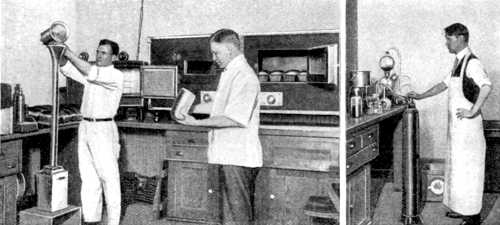
Before beginning the work in the laboratory, most of the research fellows familiarize themselves with the problems they are to undertake by spending several weeks, or even months, in the factories where the results of their work are to be applied, thus gaining first-hand knowledge of the manufacturing conditions which must be met. Nor does their research work stop with the achievement of mere laboratory results. These once gained, a “unit plant” is constructed, sometimes on the university grounds, sometimes farther away, in order to be beyond the reach of curious outsiders, and the new process tested or the new product manufactured on a scale large enough to demonstrate its commercial applicability. This “unit plant” demonstration, too, is often followed by a “full-sized” experiment with all the resources of a great manufacturing plant at the investigator’s disposal, before the results of his work are finally accepted as satisfactory. Mere theories win no prizes at the Mellon Institute.
While nothing that could affect the interests of the supporters of the industrial fellowships may be made public, yet enough was disclosed to me by Professor Duncan to prove the tremendous value to industry, and so to the public generally, of the work which the Mellon Institute is doing for American manufacturers.
[p.479] “Here is the result of one of our researches,” he said, taking from his desk several objects made of what appeared to be vulcanite or hard rubber. “And here is another specimen of the same substance,” This was a rod of material that looked exactly like a fine specimen of clear amber. “Both of those substances are the same,” he said. “It is a new product, called amberoid, which was discovered by our industrial fellows. A manufacturer wanted a new finish for wood—an enamel that would be better than anything yet produced. He provided a fund of $1,500 for the first year and $4,200 a year for two years more, with a bonus of 25 per cent of the stock of his company for the three scientists engaged in the research. The product which they have evolved is revolutionary. The only enamel now in use which approaches it in quality has to be made and applied under very high pressures and at high temperature. This is produced and readily worked at 60° centigrade, or about 140° F., and without heavy pressures. It is clear and translucent, can be dyed or colored as desired, and is a perfect substitute for vulcanite in every possible use, both because of its elasticity and its hardness and high insulating power. It is [p.480] odorless, insoluble in acids or alkalis, and nonexplosive. It can be used as a binding material, as with sawdust for artificial flooring, or with carborundum for grinding and polishing. I regard it as one of the most important industrial discoveries of recent years.
“Another very important research is one which is now in its third year, in petroleum. There was a variety of problems presented to the nine fellows engaged in this work. The endowment is $10,000 a year for three years and the bonus a 30-per-cent interest in the discoveries made. One of the most important results so far attained is the discovery of a cheap and practical method of extracting high-grade gasoline from petroleum wastes which have heretofore been thrown away. The importance of this, in view of the tremendous increase in the demand for gasoline, is apparent. These fellows have also discovered a new method of distilling lubricating oils, which gives better results than any process heretofore used.
“Another group of fellows, working under a different endowment, has found new methods of producing hydrogen and new markets for this gas.
“'The problem of the preservation of orange juice has puzzled the Florida and California fruit growers for 30 years. No matter what preservatives were used, the preserved juice would eventually turn brown. A practical and cheap method of preserving it would make it possible to utilize a large part of the orange crop which is now wasted. One of our fellows has discovered such a process, whereby orange juice can not only be preserved, but crystallized, so that it can be packed and handled in a dry form: again becoming true orange juice when mixed with water, the only change being that it is slightly less sweet than when first pressed. No artificial preservatives of any kind are used.
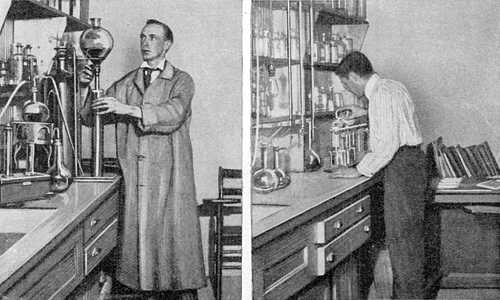
“One of our most important lines of research, so far as Pittsburgh is concerned, is the effort to find an effective, yet commercially practical way of abolishing the smoke nuisance. The sum of $41,000 was given during a period of three years, and we have now found the answer. The passage of a high-potential current of electricity, of low amperage, through very small wires suspended vertically in a flue, has been found to cause the precipitation of the carbon particles in the smoke. Arrangements are being made to give Pittsburgh the first opportunity to avail itself of this discovery, which was financed from motives of public spirit more than the desire for commercial gain.
“We are now testing, in a unit plant, a new method of extracting copper at a profit from ‘tailings’ and low-grade ores which were formerly of little or no value. Some of our fellows have made important discoveries relating to the hardening of fats by catalysis.* An interesting research now under way deals with the purification of sewer grease for use in soap making. The utilization of leather scrap; a method of making glass of a new and distinctive color; the whole subject of the chemistry of glue, of which little is known; methods of coating steel with copper; questions dealing with the utilization of natural gas; the production of cement, and the corrosion of steam radiators—these are among the practical, present-day industrial problems which are being attacked under these industrial fellowships. Most of them will be solved. There have been but two failures so far to get the results sought, and these were such as to reflect no discredit on the institute.
“A particularly interesting problem of far-reaching importance is involved in an industrial fellowship, negotiations for the endowment for which are now under way. The positive results that have been achieved in the use of radium for the treatment of cancer have made the question of the world’s radium supply a vital one. Scientists have long known that the Roentgen rays—the ordinary ‘X-rays’—are identical with the curative rays of radium [p.481] —the so-called ‘gamma’ rays—except that the X-rays have much less penetrating power. It has been suggested that if some means could be found to produce by the electric current X-rays having the penetrating power of the gamma rays, the curative powers of radium would be at the command of every physician at a trifling expense. It will require a fund of at least $7,000 a year for an industrial fellowship having this discovery as its object. It will take some time to find the best-equipped man to undertake this re search, for, as I have told you, it is easier to get money than men. But he will be found, and the work will be undertaken. If he succeeds, some arrangement will be made to provide an adequate prize for his discovery and to give the result of his work freely to all the world, for the use of the whole medical profession in the relief of suffering humanity.
“If this discovery shall be made and everything else we have accomplished should be wiped out, our work will have justified the faith of its founders.”
* A description of this method of converting fluid oils or fat into stable solids was published in Popular Mechanics Magazine for November, 1913, page 622.
[Notice the reference to the “nonexplosive” property in the description of amberoid. The earliest plastic invented and still being manufactured in this era was celluloid, and its explosive nature was so severe that factories were not infrequently destroyed. Also notice the invention of dry crystallized orange juice described in this 1914 article. True Orange Crystallized Orange Juice, for example, is a brand available today, made 100% from the oils and juice from the fresh oranges. Contrast the modern commercial product Tang fruit-flavored dry soft drink mix, formulated in 1957, which was made popular in the 1960s when astronauts took Tang along on their space missions. Tang is concocted from sugar, fructose, citric acid, various other food additives. It gets its taste from flavourings and its colour from food dyes.—Webmaster]
- Science Quotes by Robert Kennedy Duncan.
- 1 Nov - short biography, births, deaths and events on date of Duncan's birth.
- Bread - Chapter from Some Chemical Problems of Today (1911) by Robert Kennedy Duncan.
- Camphor: An Industry Revolutionized - Chapter from Some Chemical Problems of Today (1911), by Robert Kennedy Duncan.
